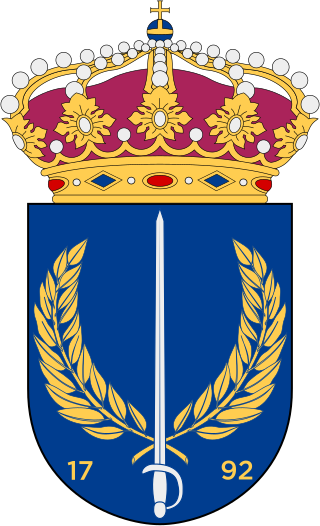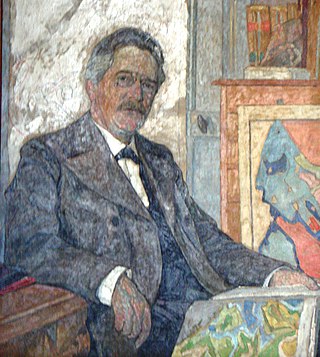
The Royal Academies are independent organizations, founded on Royal command, that act to promote the arts, culture, and science in Sweden. The Swedish Academy and Academy of Sciences are also responsible for the selection of Nobel Prize laureates in Literature, Physics, Chemistry, and the Prize in Economic Sciences. Also included in the Royal Academies are scientific societies that were granted Royal Charters.

The Royal Swedish Academy of Letters, History and Antiquities also called simply the Royal Academy of Letters or Vitterhetsakademien abbreviated KVHAA is the Swedish royal academy for the Humanities. Its many publications include the archaeological and art historical journal Fornvännen, published since 1906.

The Swedish University of Agricultural Sciences, or Swedish Agricultural University is a public research university in Sweden. Although its main campus and head office is located in Ultuna, Uppsala, the university has several campuses in different parts of Sweden; the other main facilities being Alnarp in Lomma Municipality, Skara, and Umeå.

The government agencies in Sweden are state-controlled organizations that act independently to carry out the policies of the Government of Sweden. The ministries are relatively small and merely policy-making organizations, allowed to monitor the agencies and preparing decision and policy papers for the government as a collective body to decide upon.

Norra Bantorget is an area in central Stockholm, named after the location where the first Stockholm North Station was built. It is the traditional Social Democratic grounds of the Swedish capital. It is the location of the LO headquarters, the Swedish Trade Union Confederation.

Vasaparken is a park in the Vasastaden district of Stockholm, Sweden.
Tegnérlunden is a park at the border of city districts Norrmalm and Vasastan in central Stockholm, Sweden.

Eastmaninstitutet is a dental care centre specialized in orthodontics, periodontology and oral surgery located in Vasastaden, Stockholm, Sweden. It was built with a million dollar donation from the American inventor George Eastman and opened in 1937.
The Ministry for Rural Affairs, known between 1900 and 2010 as the Ministry of Agriculture, was a ministry within the government of Sweden. The ministry was responsible for matters relating to rural areas, food and land- and water-based industries, regional development, transport and infrastructure, housing, and community planning. The ministry was headed by the minister for rural affairs (2011–2014) and the minister of agriculture (1900–2010). The ministry was disbanded on 31 December 2014, and from 1 January 2015, the matters was handled by the Ministry of Enterprise and Innovation.

The Ministry of Culture is a ministry within the government of Sweden responsible for culture policy. The ministry is headed by the Minister for Culture, currently Parisa Liljestrand (m).

The Ministry of Education and Research is a government ministry in Sweden responsible for matters relating to schools, universities, colleges, and research.

Military Academy Karlberg is a Swedish military academy, since its inauguration in 1792 in operation in the Karlberg Palace in Solna, just north of central Stockholm. It is thus the oldest military academy in the world to remain in its original location.

Experimentalfältet was an area in Frescati in northern Stockholm that was used by the Royal Swedish Academy of Agriculture and Forestry from the early 19th century until the 1960s. In the 1960s its mission was changed, when the new campus of Stockholm University was installed on the fields. The former Roslagsbanan railway station Universitetet used to be called Experimentalfältet but changed its name when the university had been established there.

Jacob Faggot was a Swedish scientist, civil servant, and surveyor.

Events from the year 1811 in Sweden

Arvid Gustaf Högbom (1857-1940) was a Swedish geologist. He was a professor of mineralogy and geology at Uppsala University.
Karen Beauchemin is a federal scientist in Canada who is recognized as an international authority on methane emissions and ruminant nutrition. Her research helps develop farming techniques that improve how we raise cattle for meat and milk, while reducing the environmental impacts of livestock production.

Axel Fredrik Claësson Wachtmeister af Johannishus was a Swedish politician and diplomat who from 2 August 1905 until 7 November 1905 served as Minister of Foreign Affairs of Sweden.

Björkborn Manor is a manor house and the very last residence of Alfred Nobel in Sweden. The manor is located in Karlskoga Municipality, Örebro County, Sweden. The current-standing white-colored manor house was built in the 1810s, but the history of the property is older.
Vagn J. Brøndegaard was a Danish ethnobotanist and folklife researcher with a focus on folk plant use.














